Xcaret was occupied by the pre-Columbian Maya and functioned as a port for navigation and an important Maya trading center. Some of the site's original structures are contained within a modern-day tourism development, the privately owned Xcaret Eco Park.
This eco-archaeological park shows different aspects of the Mayan culture of Quintana Roo, and it also has ecological importance due to its labor for the conservation and reproduction of regional flora and fauna. Within its limits there is the archaeological site Pole, a large variety of tropical animals and plants, and a series of attractions to practice water activities, as well as a beach.
Xcaret means "small inlet" in Mayan. Its name comes from its situation next to a small inlet that in the past served as a strategic location for navigation and commerce for the Maya. The original name of the site was p'ole', from the root p'ol that means "merchandise" or "deal of merchants", which gives an idea of the economical relevance of the site.
Several small Maya ruins lie within the park's 200 acres. According to the research by the National Institute of Anthropology and History (INAH) the first buildings of the site are from the years 200 to 600 C.E., but the majority of them are from the period from 1200 to 1550 C.E.. The constructions of the Late Post-Classical period are situated along the coast; some of them in strategic positions for its surveillance. The site had a wall, but unlike the one in Tulum that was open towards the ocean, the wall at Xcaret defended the site from assaults coming from the sea. Xcaret was inhabited at the time of the first stage of the Spanish incursion of Alonso Davila and Francisco de Montejo into the eastern coast of the Yucatan Peninsula (1527 to 1529 C.E.).

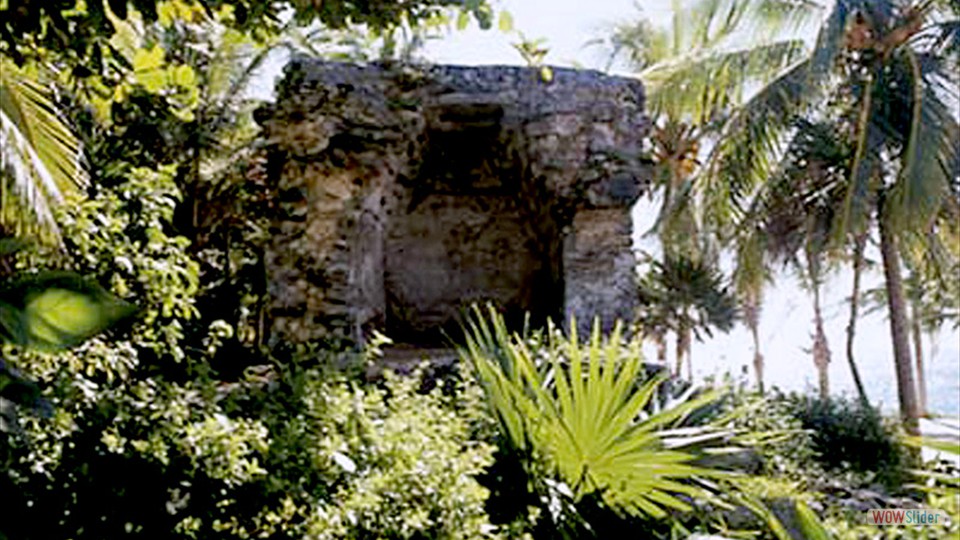
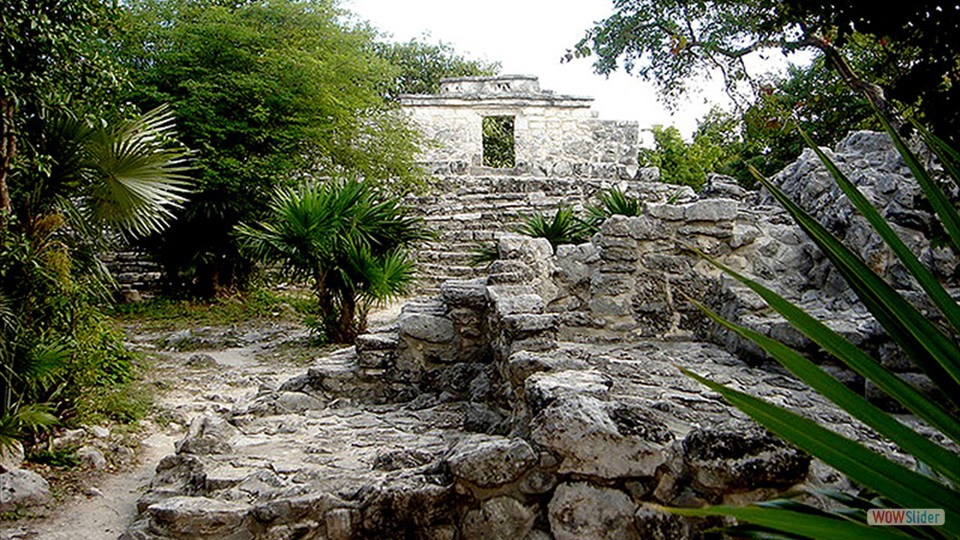

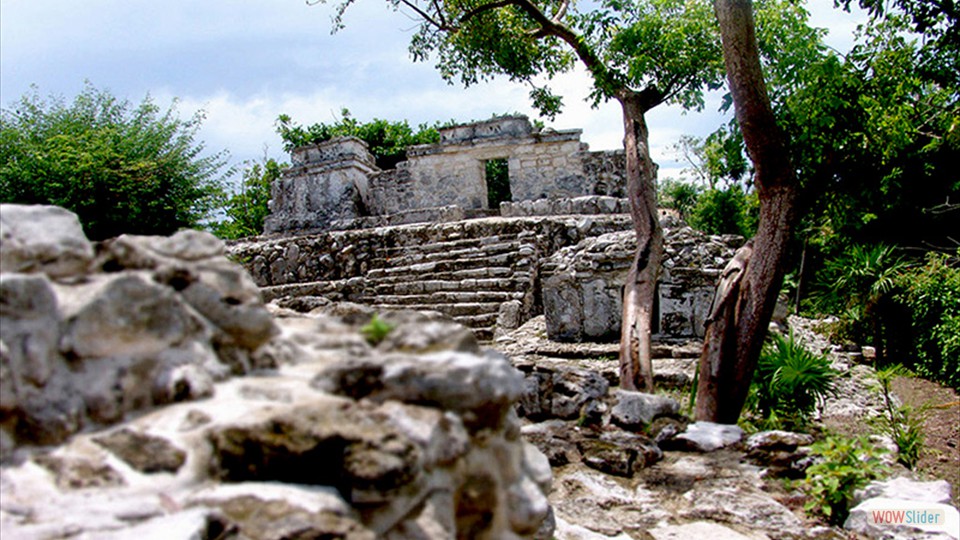
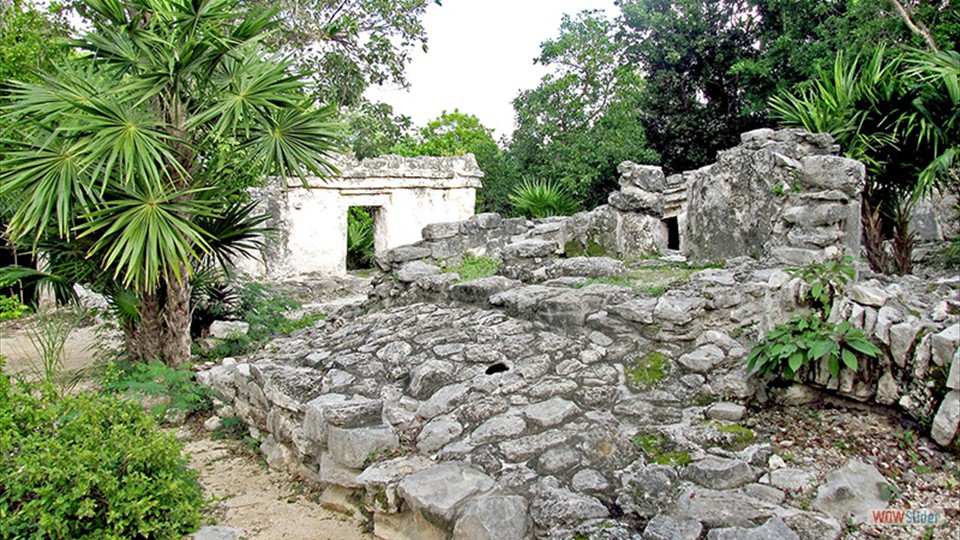
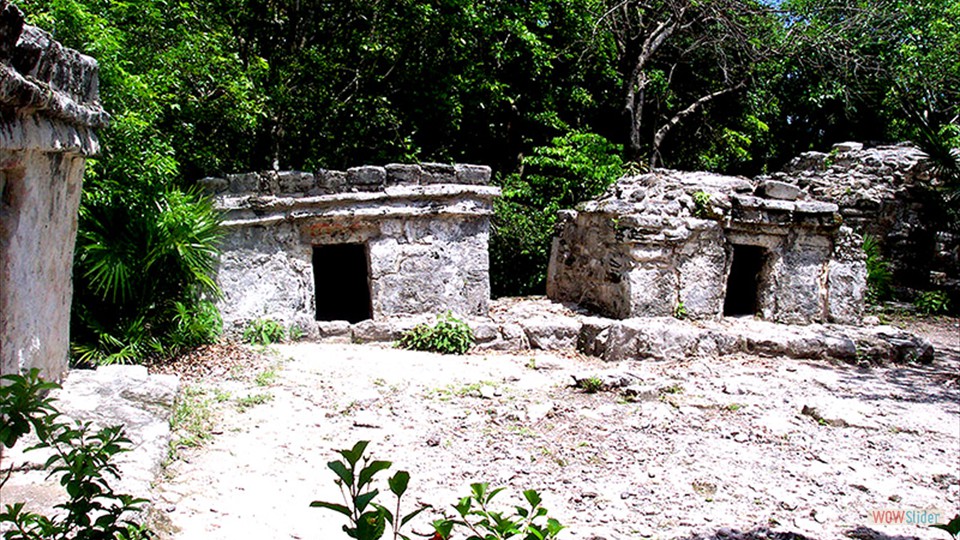
 1
1 2
2 3
3 4
4 5
5 6
6